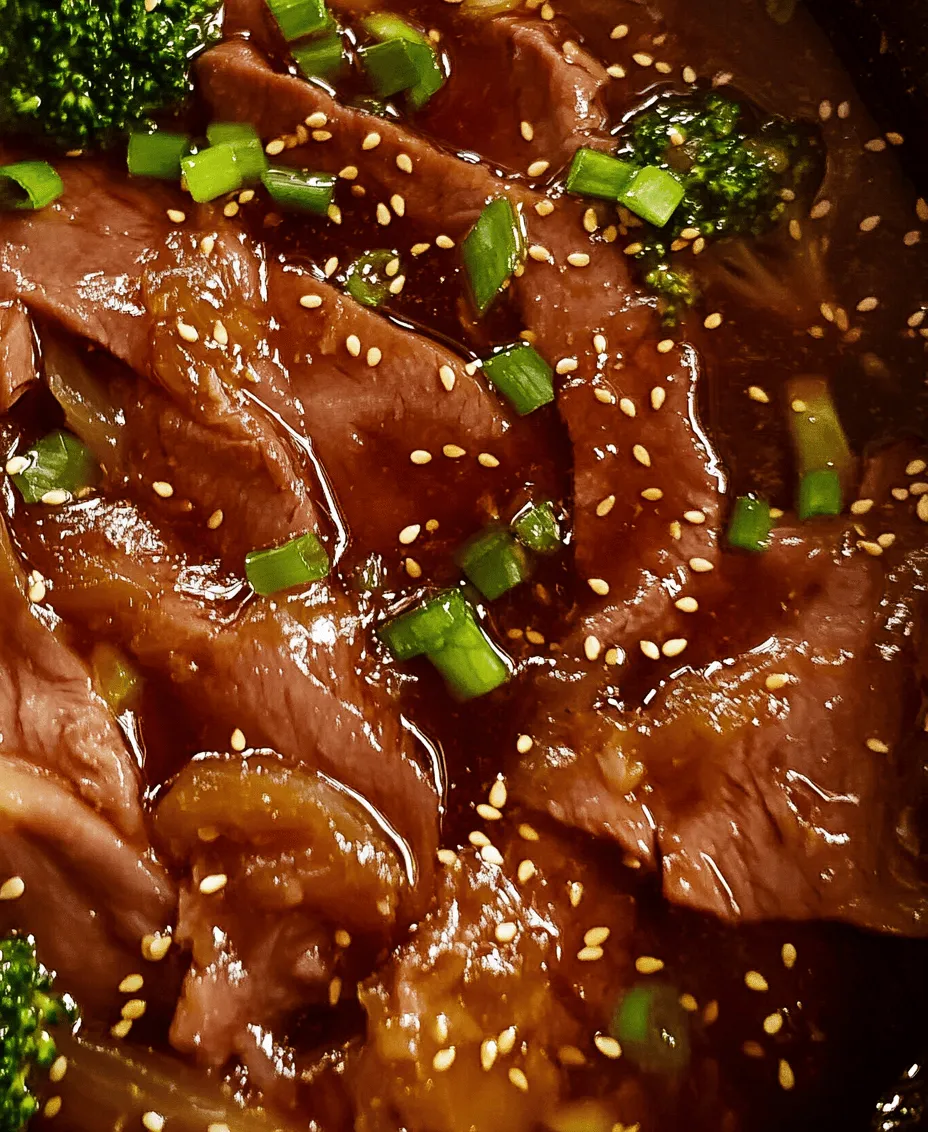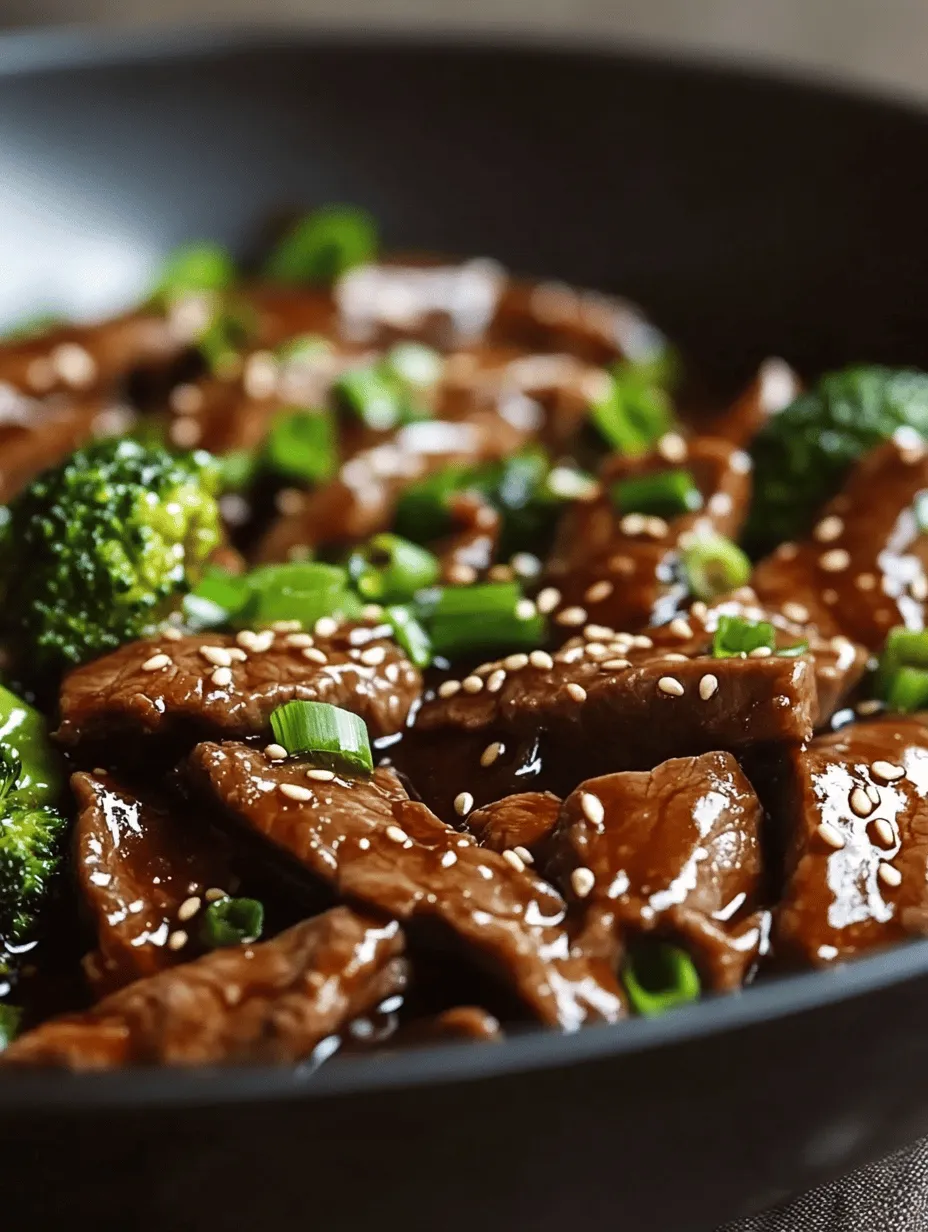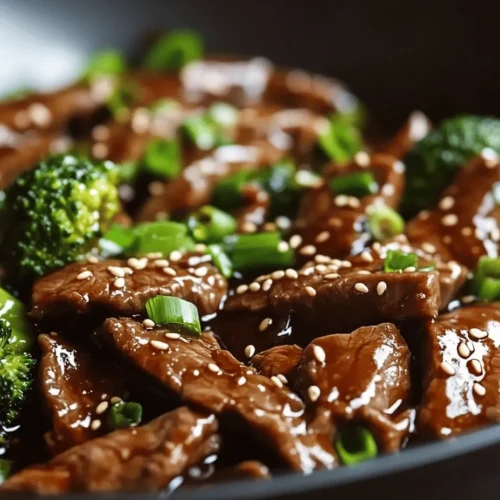Introduction: Exploring the Flavors of Chinese Cuisine
Chinese cuisine is a vibrant tapestry woven with diverse flavors, textures, and aromas, each dish telling a unique story. Among the countless culinary treasures, Chinese Beef and Broccoli stands out as a beloved classic, celebrated for its harmonious blend of tender beef and crisp broccoli, all enveloped in a luscious, savory sauce. This dish not only delivers on taste but is also a popular choice for those seeking a quick and nutritious meal that doesn’t compromise on flavor.
Originating from Chinese-American cuisine, Beef and Broccoli has its roots in traditional stir-frying methods that have been passed down through generations. While its origins can be traced back to the Chinese provinces, the dish has evolved, becoming a staple in Chinese restaurants worldwide. The vibrant green of the broccoli paired with the rich brown of the beef creates a visually appealing plate, making it as delightful to look at as it is to eat.
In this article, we will guide you through the preparation of this delectable dish, providing you with insights into its cultural significance and the essential ingredients that bring it to life. We will also explore variations and serving suggestions that will elevate your dining experience, whether you’re preparing a weeknight family meal or entertaining guests.
Understanding the Ingredients: A Closer Look at Beef and Broccoli
The Essential Components of the Dish
To create an authentic and satisfying Chinese Beef and Broccoli, it is crucial to understand the essential ingredients that contribute to its flavor and texture.
Beef Sirloin
The star of this dish is undoubtedly the beef sirloin. Known for its balance of tenderness and flavor, sirloin is a popular choice in stir-frying. Its marbling allows for a juicy and satisfying bite when cooked correctly. When selecting beef for this recipe, look for cuts that are bright red with minimal fat. Slicing the beef against the grain is vital to ensure that each piece remains tender, enhancing the overall mouthfeel of the dish.
Broccoli
Broccoli plays a pivotal role in this recipe, not just as a vibrant green vegetable but also as a nutritional powerhouse. Packed with vitamins C and K, fiber, and antioxidants, broccoli is not only low in calories but also contributes to a well-rounded meal. In terms of texture, the slight crunch of blanched or steamed broccoli complements the tender beef perfectly, creating a delightful contrast that elevates each bite.
Aromatics
No Chinese dish is complete without the aromatic duo of garlic and ginger. These two ingredients are foundational in Chinese cooking, providing a fragrant base that infuses the dish with depth and warmth. Garlic adds a robust flavor, while ginger brings a hint of spiciness and freshness. Together, they create a fragrant backdrop that enhances the other ingredients, resulting in a well-balanced dish.
Sauces
The savory sauce that envelops the beef and broccoli is a blend of soy sauce and oyster sauce. Soy sauce, with its umami-rich profile, adds saltiness and depth, while oyster sauce introduces a hint of sweetness and complexity. This combination creates a deliciously rich sauce that clings to the beef and broccoli, ensuring that every bite is infused with flavor. Understanding the balance of these sauces is key to achieving the perfect taste.
Cornstarch
Cornstarch is a critical ingredient in this recipe, serving as a thickening agent for the sauce. When marinating the beef, cornstarch helps to create a velvety coating that locks in moisture and enhances the texture of the meat during cooking. This technique, known as velveting, is a hallmark of Chinese cooking that ensures the beef remains tender and juicy.
Sesame Oil
Finally, a drizzle of sesame oil is the finishing touch that brings depth to the dish. Known for its nutty flavor, sesame oil should be used sparingly, as its rich taste can easily overwhelm the other ingredients. A light drizzle at the end of cooking adds a fragrant aroma and enhances the overall flavor profile, making the dish that much more enjoyable.
Marinating the Beef: The Key to Tenderness and Flavor
The Importance of Marination
Marinating the beef is a critical step in preparing Chinese Beef and Broccoli. Proper marination not only enhances the flavor but also tenderizes the meat, ensuring that each bite is succulent and enjoyable. The marinade typically consists of a mix of soy sauce, cornstarch, and a touch of sesame oil, creating a flavorful coating that penetrates the beef.
Suggested Marination Time and Techniques for Optimal Results
For optimal results, marinate the beef for at least 30 minutes. However, if time allows, letting it sit for 1-2 hours in the refrigerator can yield even better flavor and tenderness. When marinating, it’s essential to coat the beef evenly and allow it to absorb the flavors fully. This process also helps to create a beautiful glaze during cooking, enhancing the overall presentation of the dish.
Tips on Seasoning: Balancing Flavors with Salt and Pepper
When seasoning the beef, it’s important to strike a balance. While soy sauce provides saltiness, adjusting with a pinch of salt and freshly cracked black pepper can enhance the overall flavor. Be cautious not to over-season, as the sauces used later in the cooking process will also contribute to the final taste.
Preparing the Broccoli: Techniques for the Perfect Vegetable
Blanching vs. Steaming
When it comes to cooking broccoli for Beef and Broccoli, blanching is the preferred method. Blanching allows the broccoli to maintain its vibrant green color and crisp texture, which is essential for achieving the perfect dish. While steaming is a viable option, it often results in softer broccoli that may lose some of its crunch.
Step-by-Step Instructions for Blanching Broccoli
1. Preparation: Start by washing the broccoli thoroughly. Cut the florets into bite-sized pieces, ensuring they are uniform in size for even cooking.
2. Boil Water: In a large pot, bring a generous amount of water to a rolling boil. Adding a pinch of salt to the water can enhance the color and flavor of the broccoli.
3. Blanching: Once the water is boiling, add the broccoli florets and blanch for about 2-3 minutes. The goal is to cook them until they are bright green and slightly tender but still crisp.
4. Ice Bath: Immediately transfer the broccoli to a bowl of ice water to stop the cooking process. This method helps preserve the color and crunchiness of the vegetable.
5. Drain: After a few minutes in the ice bath, drain the broccoli and pat it dry with a clean kitchen towel. This step is crucial to ensure that excess moisture does not dilute the sauce later on.
Tips on Maintaining Color and Crunchiness
To maintain the broccoli’s vibrant color and crunchiness, timing is essential. Blanching for too long can result in mushy vegetables, so always keep an eye on the clock. Additionally, the ice bath is critical to halting the cooking process and locking in that beautiful green hue.
Stir-Frying: The Heart of Chinese Cooking
Choosing the Right Equipment
When it comes to stir-frying, using the right equipment is key to achieving the best results. A traditional wok is the ideal choice, as its shape allows for even heat distribution and promotes quick cooking. The high sides of a wok also make it easier to toss ingredients, ensuring that everything cooks evenly.
For those without a wok, a large skillet can serve as a suitable alternative. Just be sure to choose a pan with a heavy bottom to prevent sticking and ensure even cooking.
The Stir-Frying Process Explained
Stir-frying is a quick cooking method that requires high heat and swift movements to achieve that signature sear on the beef while maintaining the integrity of the vegetables. Here’s how to master the stir-frying process:
Temperature Control: Achieving the Perfect Sear on the Beef
Before adding any ingredients to the wok, preheat it over high heat until it is smoking hot. This high temperature is crucial for achieving a beautiful sear on the beef. Once the wok is hot, add a small amount of oil and swirl it around to coat the surface.
Timing: Knowing When to Add Aromatics for Maximum Flavor
Start by adding the marinated beef to the hot wok, spreading it out in a single layer. Allow it to sear undisturbed for about 1-2 minutes before stirring. This technique allows for caramelization, which enhances the flavor.
Once the beef is nearly cooked through, add the minced garlic and ginger. Timing is essential here; adding aromatics too early can lead to burning, while adding them too late may result in a lack of flavor. Stir-fry the mixture for an additional minute, allowing the garlic and ginger to infuse the oil with their fragrant essences.
With these initial steps covered, you’ll be well on your way to creating a delicious Chinese Beef and Broccoli dish that is sure to impress. Stay tuned as we delve deeper into the cooking process and additional tips to perfect this classic recipe.




